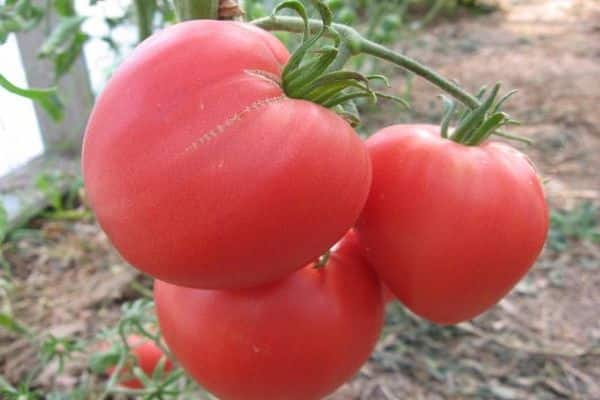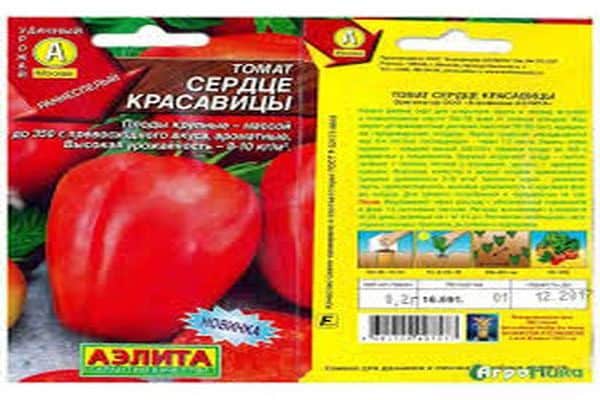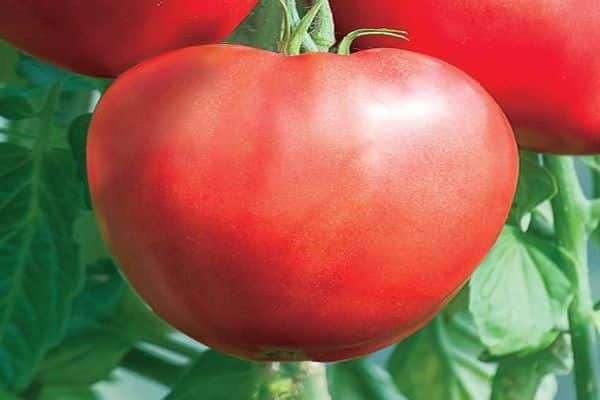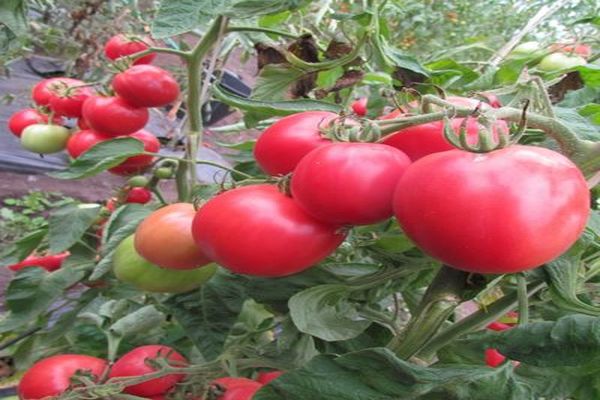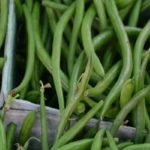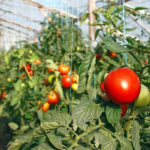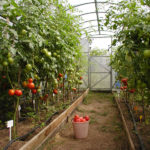Tomato Heart of Beauty is a new variety, it was included in the State Register of Breeding Achievements in 2015. The variety is determinate, the bushes grow quite tall up to 0.7–1 m, and then they lay buds, which bloom and then the bushes stop growing. The variety is classified as early, since 100–110 days pass from the appearance of the first shoots to the harvesting of tomatoes. The leaves are short, dark green. The first inflorescence is formed above the 8th leaf, the next inflorescences are formed after 1–2 leaves.
Characteristics and description of the tomato variety Heart of Beauty: the fruits are heart-shaped. They are quite large, at first fruits weighing up to 350 g are formed, and then they become somewhat smaller, the weight of the remaining fruits is 200–250 g. The ribs of the tomato are clearly visible near the stalk.
The color of an unripe tomato is light green; it has a characteristic dark spot at the base; the ripe fruit is orange-red. The number of seed nests is more than 6.
Advantages
The Beauty's Heart variety has many advantages:
- tomatoes have a good presentation, the fruits have an unusual shape;
- they are very tasty and aromatic;
- productivity is high;
- the fruits are large;
- they ripen early;
- They are eaten fresh and made into juice.
Care instructions
Requirements for soil and place of planting seedlings
It is imperative to take into account that the fruits are large. Therefore, in the fall, they select a sunny area, dig it up on the bayonet of a shovel and apply fertilizer: 2–3 tbsp. spoons of superphosphate and 2 tbsp. spoons of potassium sulfate per m².
Sowing seeds
Seeds are sown in March. When 1–2 true leaves appear, the seedlings are planted in separate cups.
Transplanting seedlings to the site
When the seedlings are 45–55 days old, they are transplanted to the site. Keep a distance of 50 cm between plants, placing 4–5 pieces per m².
This is usually done in May. 2 days before planting the seedlings, the seedlings are treated with a solution of phytosporin-M. If the soil has not been fertilized in the fall, then pour 1 teaspoon of nitroammophoska into each hole. When planting seedlings on a plot, they are covered with soil up to the top leaves. Then roots will begin to grow on the stem, which is in the soil.
Further care of seedlings
Growing tomatoes involves regular watering, pulling out weeds, and loosening the soil.
10 days after planting the seedlings, the soil is fertilized with an infusion of mullein with green grass. This is done like this: mullein and chopped grass are half poured into the barrel, and then water is added. Leave for several days. Then dilute with water and fertilize the bushes.
After fertilizing, mulch from rotted compost and chopped grass is placed under the bushes.
The bushes are fed again 10 days after the first cluster blooms. Then they are fed during fruit harvesting. To prevent the bushes from becoming sick with blossom end rot, when tomatoes grow, the bushes are sprayed every 10 days, making a solution of 1 tbsp. spoons of calcium nitrate per ten-liter bucket of water.
You can do foliar feeding with a solution of 10 g of boric acid, 2–3 sodium humate crystals, 1 tbsp. spoons of urea and a ten-liter bucket of water. Fertilize early in the morning or late in the evening.
Reviews from those who planted the variety are enthusiastic. Everyone likes large, sweet fruits, but the bushes require careful care.

